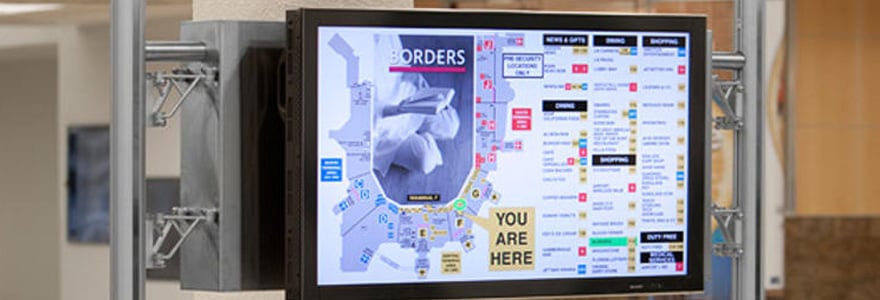As our cities continue to grow and evolve, so too does the need for innovative ways to enhance urban experiences. One such solution that has gained traction in recent years is the use of information display technology. From outdoor digital billboards to interactive displays in museums and digital signage in shopping malls, the benefits of information display in urban areas are vast. Not only can information display technology provide valuable information to residents and visitors, but it can also serve as an effective tool in emergency situations. However, as with any new technology, there are challenges and risks to consider, including the potential for information overload and security and privacy concerns. Furthermore, the sustainability of information display technology is also an important consideration to ensure its continued usefulness and effectiveness in enhancing urban experiences. In this article, we will delve into the benefits, examples, challenges, and sustainability considerations of information display technology in urban areas.
Benefits of Information Display in Urban Areas
As cities continue to grow, the need for effective communication within urban areas is becoming increasingly important. Information display technology can help to address this need. By providing timely and relevant information to people in urban areas, information displays can enhance public safety, improve the efficiency of transportation infrastructure, and increase engagement with cultural institutions and public spaces. More on procity.eu.
- Information display technology can help to improve urban safety by providing alerts and information about emergencies, hazards, and weather events.
- Effective information display technology can help to reduce congestion on roadways by providing real-time information about traffic patterns, construction projects, and public transportation options.
- Information displays can also increase engagement with cultural institutions and public spaces by providing interactive exhibits and tours, as well as information about local events and attractions.
Examples of Information Display
Outdoor Digital Billboards
Outdoor digital billboards are a common form of information display in urban areas. These displays allow advertisers to quickly and easily convey their message to a large audience, while also providing useful information to the public. Some digital billboards are even capable of displaying real-time information about traffic conditions, weather, and other relevant information.
Interactive Displays in Museums
Interactive displays in museums are a great example of how information display technology can be used to enhance the visitor experience. These displays allow visitors to engage with exhibits in a more immersive and interactive way. For example, an interactive display might allow a visitor to explore a virtual replica of a historical artifact or access additional information about an exhibit.
Digital Signage in Shopping Malls
Digital signage is an increasingly popular way for shopping malls and other retail spaces to communicate with customers. These displays allow advertisers to quickly and easily update their messaging and promote special offers in real-time. Digital signage can also be used to provide wayfinding information and other helpful details to shoppers.
Usefulness of Information Display in Emergency Situations
Information display technology can play a critical role in emergency situations. In the event of a natural disaster, terrorist attack, or other emergency, information displays can provide real-time alerts and information about evacuation routes, shelter locations, and other important details. This information can help to reduce confusion and panic in emergency situations, and increase public safety.
Challenges and Risks of Information Display in Urban Areas
While information display technology offers many benefits, there are also some risks and challenges associated with its use in urban areas.
Potential for Information Overload
One challenge associated with information display technology is the potential for information overload. With so much information being displayed to the public at any given time, it can be difficult for people to process and prioritize the information that is most relevant to them.
Security and Privacy Concerns
Another potential risk associated with information display technology is the risk of security and privacy breaches. Hackers and other bad actors can potentially access sensitive information that is being displayed to the public, which could lead to identity theft, financial loss, and other negative outcomes.
Maintenance and Repair Costs
Finally, there are also practical concerns associated with the use of information display technology in urban areas. These displays require regular maintenance and repair, which can be costly and time-consuming.
Sustainability Considerations for Information Display Technology
As cities work to become more sustainable and reduce their carbon footprints, it is important to consider the environmental impact of information display technology. This includes choosing displays that are energy-efficient and recyclable, as well as minimizing the use of disposable materials in the construction and maintenance of these displays. By taking these steps, we can ensure that information display technology continues to provide value to urban areas while also minimizing its impact on the environment.
